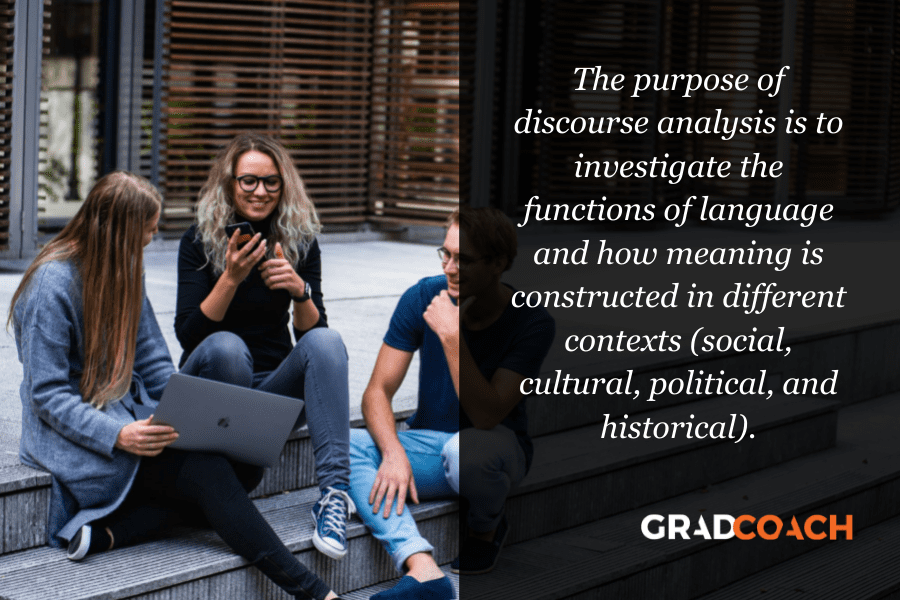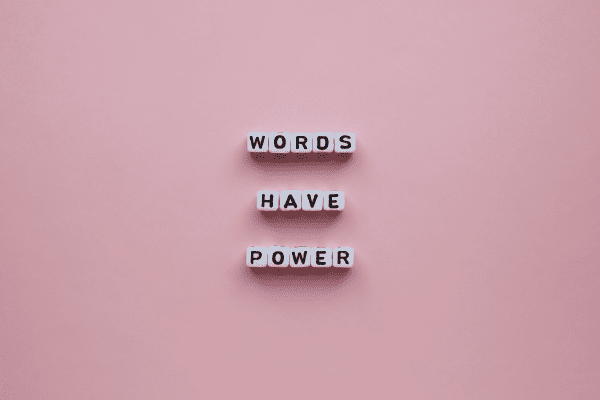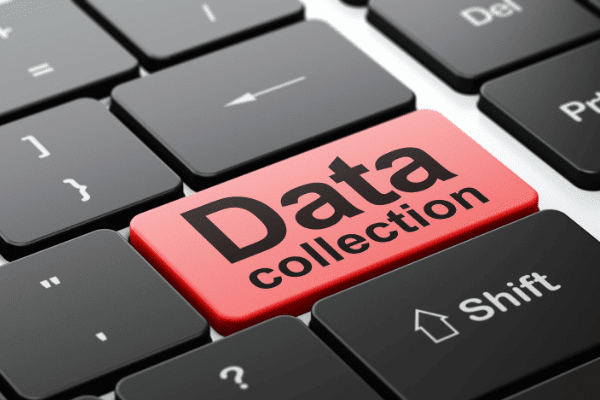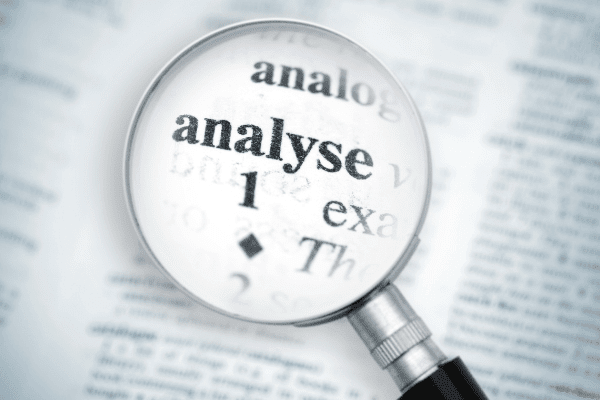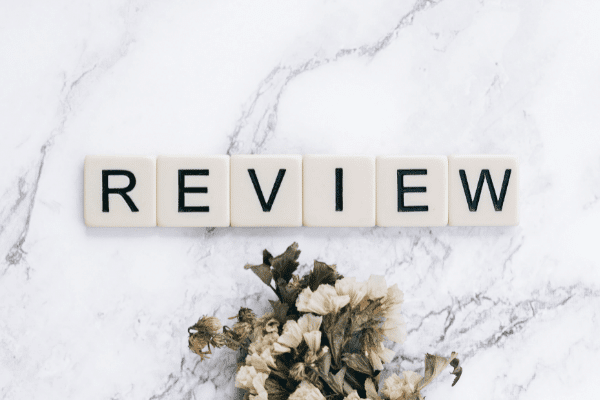What is discourse analysis
What is discourse analysis
Understanding the Use of Language Through Discourse Analysis
Observing how various means of discourse create context
Discourse analysis, also called discourse studies, was developed during the 1970s as an academic field. Discourse analysis is a broad term for the study of the ways in which language is used between people, both in written texts and spoken contexts.
Discourse Analysis Defined
Whereas other areas of language study might focus on individual parts of language—such as words and phrases (grammar) or the pieces that make up words (linguistics)—discourse analysis looks at a running conversation involving a speaker and listener (or a writer’s text and its reader).
In discourse analysis, the context of a conversation is taken into account as well as what’s being said. This context may encompass a social and cultural framework, including the location of a speaker at the time of the discourse, as well as nonverbal cues such as body language, and, in the case of textual communication, it may also include images and symbols. «[It’s] the study of real language use, by real speakers in real situations,» explains Teun A. van Dijk, a noted author and scholar in the field.
Key Takeaways: Discourse Analysis
What Discourse Analysis Does
Misunderstanding relayed information can lead to problems—big or small. Being able to distinguish subtle subtext in order to differentiate between factual reporting and fake news, editorials, or propaganda is crucial to interpreting true meaning and intent. This is the reason that having well-developed skills in the critical analysis of discourse—to be able to «read between the lines» of verbal and/or written communication—is of utmost importance.
Since the establishment of the field, discourse analysis has evolved to include a wide range of topics, from the public versus private use of language to official versus colloquial rhetoric, and from oratory to written and multimedia discourses. The field of study has further branched out to be paired with the fields of psychology, anthropology, and philosophy, thus meshing linguistics with sociology.
«We’re also ‘asking not just about the rhetoric of politics, but also about the rhetoric of history and the rhetoric of popular culture; not just about the rhetoric of the public sphere but about rhetoric on the street, in the hair salon, or online; not just about the rhetoricity of formal argument but also about the rhetoricity of personal identity.» —from «Discourse Analysis and Rhetorical Studies» by Christopher Eisenhart and Barbara Johnstone
Academic Applications of Discourse Analysis
There are many avenues we can study through the lens of discourse analysis including discourse during a political debate, discourse in advertising, television programming/media, interviewing, and storytelling. By looking at the context of language use, not simply the words, we can understand nuanced layers of meaning that are added by the social or institutional aspects at work, such as gender, power imbalance, conflicts, cultural background, and racism.
As a result, discourse analysis can be used to study inequality in society, such as institutional racism, inherent bias in media, and sexism. We can also use it to examine and interpret discussions regarding religious symbols located in public places.
Real-World Applications of Discourse Analysis
Apart from scholarly applications, discourse analysis has some very pragmatic uses as well. Specialists in the field are tasked with helping world leaders understand the true meaning behind communications from their peers. In the field of medicine, it’s used to help physicians find ways to ensure they’re better understood by people with limited language skills, as well as guiding them in dealings when giving patients a challenging diagnosis.
For example, in one study, transcripts of conversations between doctors and patients were analyzed to determine where misunderstandings had occurred. In another, women were interviewed about their feelings regarding a diagnosis of breast cancer. How did it affect their relationships? What was the role of their social support network? How did «positive thinking» come into play?
How Discourse Analysis Differs from Grammar Analysis
Unlike grammar analysis, which focuses on the structure of sentences, discourse analysis focuses on the broad and general use of language within and between particular groups of people. Another important distinction is that while grammarians typically construct the examples they analyze, the analysis of discourse relies on actual writings and speech of the group being studied to determine popular usage.
In terms of textual analysis, grammarians may examine texts in isolation for elements such as the art of persuasion or word choice (diction), but only discourse analysis takes into account the social and cultural context of a given text.
In terms of verbal expression, discourse analysis takes in the colloquial, cultural, and living use of language—including each and every «um,» «er,» and «you know,» as well as slips of the tongue, and awkward pauses. Grammar analysis, on the other hand, relies entirely on sentence structure, word usage, and stylistic choices. This does, of course, often include a cultural ingredient but it’s missing the human element of spoken discourse.
Critical Discourse Analysis | Definition, Guide & Examples
Published on August 23, 2019 by Amy Luo. Revised on May 5, 2022.
Discourse analysis is a research method for studying written or spoken language in relation to its social context. It aims to understand how language is used in real life situations.
When you do discourse analysis, you might focus on:
Discourse analysis is a common qualitative research method in many humanities and social science disciplines, including linguistics, sociology, anthropology, psychology and cultural studies. It is also called critical discourse analysis.
Table of contents
What is discourse analysis used for?
Conducting discourse analysis means examining how language functions and how meaning is created in different social contexts. It can be applied to any instance of written or oral language, as well as non-verbal aspects of communication such as tone and gestures.
Materials that are suitable for discourse analysis include:
By analyzing these types of discourse, researchers aim to gain an understanding of social groups and how they communicate.
How is discourse analysis different from other methods?
Unlike linguistic approaches that focus only on the rules of language use, discourse analysis emphasizes the contextual meaning of language.
It focuses on the social aspects of communication and the ways people use language to achieve specific effects (e.g. to build trust, to create doubt, to evoke emotions, or to manage conflict).
Instead of focusing on smaller units of language, such as sounds, words or phrases, discourse analysis is used to study larger chunks of language, such as entire conversations, texts, or collections of texts. The selected sources can be analyzed on multiple levels.
Linguistic Society of America
Advancing the Scientific Study of Language since 1924
Discourse Analysis—What Speakers Do in Conversation
Discourse analysis is sometimes defined as the analysis of language ‘beyond the sentence’. This contrasts with types of analysis more typical of modern linguistics, which are chiefly concerned with the study of grammar: the study of smaller bits of language, such as sounds (phonetics and phonology), parts of words (morphology), meaning (semantics), and the order of words in sentences (syntax). Discourse analysts study larger chunks of language as they flow together.
Some discourse analysts consider the larger discourse context in order to understand how it affects the meaning of the sentence. For example, Charles Fillmore points out that two sentences taken together as a single discourse can have meanings different from each one taken separately. To illustrate, he asks you to imagine two independent signs at a swimming pool: «Please use the toilet, not the pool,» says one. The other announces, «Pool for members only.» If you regard each sign independently, they seem quite reasonable. But taking them together as a single discourse makes you go back and revise your interpretation of the first sentence after you’ve read the second.
Discourse and Frames
‘Reframing’ is a way to talk about going back and re-interpreting the meaning of the first sentence. Frame analysis is a type of discourse analysis that asks, What activity are speakers engaged in when they say this? What do they think they are doing by talking in this way at this time? Consider how hard it is to make sense of what you are hearing or reading if you don’t know who’s talking or what the general topic is. When you read a newspaper, you need to know whether you are reading a news story, an editorial, or an advertisement in order to properly interpret the text you are reading. Years ago, when Orson Welles’ radio play «The War of the Worlds» was broadcast, some listeners who tuned in late panicked, thinking they were hearing the actual end of the world. They mistook the frame for news instead of drama.
Turn-taking
Conversation is an enterprise in which one person speaks, and another listens. Discourse analysts who study conversation note that speakers have systems for determining when one person’s turn is over and the next person’s turn begins. This exchange of turns or ‘floors’ is signaled by such linguistic means as intonation, pausing, and phrasing. Some people await a clear pause before beginning to speak, but others assume that ‘winding down’ is an invitation to someone else to take the floor. When speakers have different assumptions about how turn exchanges are signaled, they may inadvertently interrupt or feel interrupted. On the other hand, speakers also frequently take the floor even though they know the other speaker has not invited them to do so.
Listenership too may be signaled in different ways. Some people expect frequent nodding as well as listener feedback such as ‘mhm’, ‘uhuh’, and ‘yeah’. Less of this than you expect can create the impression that someone is not listening; more than you expect can give the impression that you are being rushed along. For some, eye contact is expected nearly continually; for others, it should only be intermittent. The type of listener response you get can change how you speak: If someone seems uninterested or uncomprehending (whether or not they truly are), you may slow down, repeat, or overexplain, giving the impression you are ‘talking down.’ Frederick Erickson has shown that this can occur in conversations between black and white speakers, because of different habits with regard to showing listenership.
Discourse Markers
‘Discourse markers’ is the term linguists give to the little words like ‘well’, ‘oh’, ‘but’, and ‘and’ that break our speech up into parts and show the relation between parts. ‘Oh’ prepares the hearer for a surprising or just-remembered item, and ‘but’ indicates that sentence to follow is in opposition to the one before. However, these markers don’t necessarily mean what the dictionary says they mean. Some people use ‘and’ just to start a new thought, and some people put ‘but’ at the end of their sentences, as a way of trailing off gently. Realizing that these words can function as discourse markers is important to prevent the frustration that can be experienced if you expect every word to have its dictionary meaning every time it’s used.
Speech Acts
Speech act analysis asks not what form the utterance takes but what it does. Saying «I now pronounce you man and wife» enacts a marriage. Studying speech acts such as complimenting allows discourse analysts to ask what counts as a compliment, who gives compliments to whom, and what other function they can serve. For example, linguists have observed that women are more likely both to give compliments and to get them. There are also cultural differences; in India, politeness requires that if someone compliments one of your possessions, you should offer to give the item as a gift, so complimenting can be a way of asking for things. An Indian woman who had just met her son’s American wife was shocked to hear her new daughter-in-law praise her beautiful saris. She commented, «What kind of girl did he marry? She wants everything!» By comparing how people in different cultures use language, discourse analysts hope to make a contribution to improving cross-cultural understanding.
What (Exactly) Is Discourse Analysis?
A Plain-Language Explanation & Definition (With Examples)
By: Jenna Crosley (PhD). Expert Reviewed By: Dr Eunice Rautenbach | June 2021
Discourse analysis is one of the most popular qualitative analysis techniques we encounter at Grad Coach. If you’ve landed on this post, you’re probably interested in discourse analysis, but you’re not sure whether it’s the right fit for your project, or you don’t know where to start. If so, you’ve come to the right place.
Overview: Discourse Analysis Basics
In this post, we’ll explain in plain, straightforward language:
What is discourse analysis?
Let’s start with the word “discourse”.
In its simplest form, discourse is verbal or written communication between people that goes beyond a single sentence. Importantly, discourse is more than just language. The term “language” can include all forms of linguistic and symbolic units (even things such as road signs), and language studies can focus on the individual meanings of words. Discourse goes beyond this and looks at the overall meanings conveyed by language in context. “Context” here refers to the social, cultural, political, and historical background of the discourse, and it is important to take this into account to understand underlying meanings expressed through language.
A popular way of viewing discourse is as language used in specific social contexts, and as such language serves as a means of prompting some form of social change or meeting some form of goal.
Now that we’ve defined discourse, let’s look at discourse analysis.
Discourse analysis uses the language presented in a corpus or body of data to draw meaning. This body of data could include a set of interviews or focus group discussion transcripts. While some forms of discourse analysis center in on the specifics of language (such as sounds or grammar), other forms focus on how this language is used to achieve its aims. We’ll dig deeper into these two above-mentioned approaches later.
As Wodak and Krzyżanowski (2008) put it: “discourse analysis provides a general framework to problem-oriented social research”. Basically, discourse analysis is used to conduct research on the use of language in context in a wide variety of social problems (i.e., issues in society that affect individuals negatively).
For example, discourse analysis could be used to assess how language is used to express differing viewpoints on financial inequality and would look at how the topic should or shouldn’t be addressed or resolved, and whether this so-called inequality is perceived as such by participants.
What makes discourse analysis unique is that it posits that social reality is socially constructed, or that our experience of the world is understood from a subjective standpoint. Discourse analysis goes beyond the literal meaning of words and languages
For example, people in countries that make use of a lot of censorship will likely have their knowledge, and thus views, limited by this, and will thus have a different subjective reality to those within countries with more lax laws on censorship.
When should you use discourse analysis?
There are many ways to analyze qualitative data (such as content analysis, narrative analysis, and thematic analysis), so why should you choose discourse analysis? Well, as with all analysis methods, the nature of your research aims, objectives and research questions (i.e. the purpose of your research) will heavily influence the right choice of analysis method.
The purpose of discourse analysis is to investigate the functions of language (i.e., what language is used for) and how meaning is constructed in different contexts, which, to recap, include the social, cultural, political, and historical backgrounds of the discourse.
For example, if you were to study a politician’s speeches, you would need to situate these speeches in their context, which would involve looking at the politician’s background and views, the reasons for presenting the speech, the history or context of the audience, and the country’s social and political history (just to name a few – there are always multiple contextual factors).
Discourse analysis can also tell you a lot about power and power imbalances, including how this is developed and maintained, how this plays out in real life (for example, inequalities because of this power), and how language can be used to maintain it. For example, you could look at the way that someone with more power (for example, a CEO) speaks to someone with less power (for example, a lower-level employee).
Therefore, you may consider discourse analysis if you are researching:
As you can see, discourse analysis can be a powerful tool for assessing social issues, as well as power and power imbalances. So, if your research aims and objectives are oriented around these types of issues, discourse analysis could be a good fit for you.
Discourse Analysis: The main approaches
There are two main approaches to discourse analysis. These are the language-in-use (also referred to as socially situated text and talk) approaches and the socio-political approaches (most commonly Critical Discourse Analysis). Let’s take a look at each of these.
Approach #1: Language-in-use
Language-in-use approaches focus on the finer details of language used within discourse, such as sentence structures (grammar) and phonology (sounds). This approach is very descriptive and is seldom seen outside of studies focusing on literature and/or linguistics.
Because of its formalist roots, language-in-use pays attention to different rules of communication, such as grammaticality (i.e., when something “sounds okay” to a native speaker of a language). Analyzing discourse through a language-in-use framework involves identifying key technicalities of language used in discourse and investigating how the features are used within a particular social context.
For example, English makes use of affixes (for example, “un” in “unbelievable”) and suffixes (“able” in “unbelievable”) but doesn’t typically make use of infixes (units that can be placed within other words to alter their meaning). However, an English speaker may say something along the lines of, “that’s un-flipping-believable”. From a language-in-use perspective, the infix “flipping” could be investigated by assessing how rare the phenomenon is in English, and then answering questions such as, “What role does the infix play?” or “What is the goal of using such an infix?”
Need a helping hand?
See how Grad Coach can help you.
Approach #2: Socio-political
Socio-political approaches to discourse analysis look beyond the technicalities of language and instead focus on the influence that language has in social context, and vice versa. One of the main socio-political approaches is Critical Discourse Analysis, which focuses on power structures (for example, the power dynamic between a teacher and a student) and how discourse is influenced by society and culture. Critical Discourse Analysis is born out of Michel Foucault’s early work on power, which focuses on power structures through the analysis of normalized power.
Normalized power is ingrained and relatively allusive. It’s what makes us exist within society (and within the underlying norms of society, as accepted in a specific social context) and do the things that we need to do. Contrasted to this, a more obvious form of power is repressive power, which is power that is actively asserted.
Sounds a bit fluffy? Let’s look at an example.
Consider a situation where a teacher threatens a student with detention if they don’t stop speaking in class. This would be an example of repressive power (i.e. it was actively asserted).
Normalized power, on the other hand, is what makes us not want to talk in class. It’s the subtle clues we’re given from our environment that tell us how to behave, and this form of power is so normal to us that we don’t even realize that our beliefs, desires, and decisions are being shaped by it.
In the view of Critical Discourse Analysis, language is power and, if we want to understand power dynamics and structures in society, we must look to language for answers. In other words, analyzing the use of language can help us understand the social context, especially the power dynamics.
While the above-mentioned approaches are the two most popular approaches to discourse analysis, other forms of analysis exist. For example, ethnography-based discourse analysis and multimodal analysis. Ethnography-based discourse analysis aims to gain an insider understanding of culture, customs, and habits through participant observation (i.e. directly observing participants, rather than focusing on pre-existing texts).
On the other hand, multimodal analysis focuses on a variety of texts that are both verbal and nonverbal (such as a combination of political speeches and written press releases). So, if you’re considering using discourse analysis, familiarize yourself with the various approaches available so that you can make a well-informed decision.
How to “do” discourse analysis
As every study is different, it’s challenging to outline exactly what steps need to be taken to complete your research. However, the following steps can be used as a guideline if you choose to adopt discourse analysis for your research.
Step 1: Decide on your discourse analysis approach
The first step of the process is to decide on which approach you will take in terms. For example, the language in use approach or a socio-political approach such as critical discourse analysis. To do this, you need to consider your research aims, objectives and research questions. Of course, this means that you need to have these components clearly defined. If you’re still a bit uncertain about these, check out our video post covering topic development here.
While discourse analysis can be exploratory (as in, used to find out about a topic that hasn’t really been touched on yet), it is still vital to have a set of clearly defined research questions to guide your analysis. Without these, you may find that you lack direction when you get to your analysis. Since discourse analysis places such a focus on context, it is also vital that your research questions are linked to studying language within context.
Based on your research aims, objectives and research questions, you need to assess which discourse analysis would best suit your needs. You can get an overview of the available options here, so I won’t go into detail in this post. The main takeaway, however, is that you need to adopt an approach that aligns with your study’s purpose. So, think carefully about what you are investigating and what you want to achieve, and then consider the various options available within discourse analysis.
It’s vital to determine your discourse analysis approach from the get-go, so that you don’t waste time randomly analyzing your data without any specific plan.
Step 2: Design your collection method and gather your data
Once you’ve got determined your overarching approach, you can start looking at how to collect your data. Data in discourse analysis is drawn from different forms of “talk” and “text”, which means that it can consist of interviews, ethnographies, discussions, case studies, blog posts.
The type of data you collect will largely depend on your research questions (and broader research aims and objectives). So, when you’re gathering your data, make sure that you keep in mind the “what”, “who” and “why” of your study, so that you don’t end up with a corpus full of irrelevant data. Discourse analysis can be very time-consuming, so you want to ensure that you’re not wasting time on information that doesn’t directly pertain to your research questions.
When considering potential collection methods, you should also consider the practicalities. What type of data can you access in reality? How many participants do you have access to and how much time do you have available to collect data and make sense of it? These are important factors, as you’ll run into problems if your chosen methods are impractical in light of your constraints.
Once you’ve determined your data collection method, you can get to work with the collection.
Step 3: Investigate the context
A key part of discourse analysis is context and understanding meaning in context. For this reason, it is vital that you thoroughly and systematically investigate the context of your discourse. Make sure that you can answer (at least the majority) of the following questions:
Make sure that you include all aspects of the discourse context in your analysis to eliminate any confounding factors. For example, are there any social, political, or historical reasons as to why the discourse would exist as it does? What other factors could contribute to the existence of the discourse? Discourse can be influenced by many factors, so it is vital that you take as many of them into account as possible.
Once you’ve investigated the context of your data, you’ll have a much better idea of what you’re working with, and you’ll be far more familiar with your content. It’s then time to begin your analysis.
Step 4: Analyze your data
When performing a discourse analysis, you’ll need to look for themes and patterns. To do this, you’ll start by looking at codes, which are specific topics within your data. You can find more information about the qualitative data coding process here.
Next, you’ll take these codes and identify themes. Themes are patterns of language (such as specific words or sentences) that pop up repeatedly in your data, and that can tell you something about the discourse. For example, if you’re wanting to know about women’s perspectives of living in a certain area, potential themes may be “safety” or “convenience”.
In discourse analysis, it is important to reach what is called data saturation. This refers to when you’ve investigated your topic and analyzed your data to the point where no new information can be found. To achieve this, you need to work your way through your data set multiple times, developing greater depth and insight each time. This can be quite time consuming and even a bit boring at times, but it’s essential.
Once you’ve reached the point of saturation, you should have an almost-complete analysis and you’re ready to move onto the next step – final review.
Step 5: Review your work
Hey, you’re nearly there. Good job! Now it’s time to review your work.
This final step requires you to return to your research questions and compile your answers to them, based on the analysis. Make sure that you can answer your research questions thoroughly, and also substantiate your responses with evidence from your data.
Usually, discourse analysis studies make use of appendices, which are referenced within your thesis or dissertation. This makes it easier for reviewers or markers to jump between your analysis (and findings) and your corpus (your evidence) so that it’s easier for them to assess your work.
When answering your research questions, make you should also revisit your research aims and objectives, and assess your answers against these. This process will help you zoom out a little and give you a bigger picture view. With your newfound insights from the analysis, you may find, for example, that it makes sense to expand the research question set a little to achieve a more comprehensive view of the topic.
Discourse Analysis in Qualitative Research
What is discourse analysis?
Discourse analysis is a blanket term for a range of qualitative research approaches used in analyzing the use of language in social contexts. Researchers employ these techniques to understand the world by investigating the underlying meaning of what people say and how they say it, whether in face-to-face conversation, documents, non-verbal interaction, or images.
For example, qualitative researchers may examine how people in a given setting use a particular word to understand their upbringing or the influences other people have on them. Likewise, researchers may deconstruct and analyze words written centuries ago to understand the writer’s situation and get some general evidence about the writer’s society at that particular time.
In general, discourse analysis involves the examination of language beyond the sentence to understand how it functions in a social context. Some of the materials researchers use for discourse analysis include books, newspapers, marketing materials, government documents, conversations, and interviews.
What are the different approaches to discourse analysis?
Discourse analysis is not a specific qualitative research method; rather, it is a general term for describing all the approaches used to examine and understand discourses in relation to social interactions. Some of the common approaches to discourse analysis include:
:max_bytes(150000):strip_icc()/german-online-dictionary-56a36b3c5f9b58b7d0d1e082.jpg)



